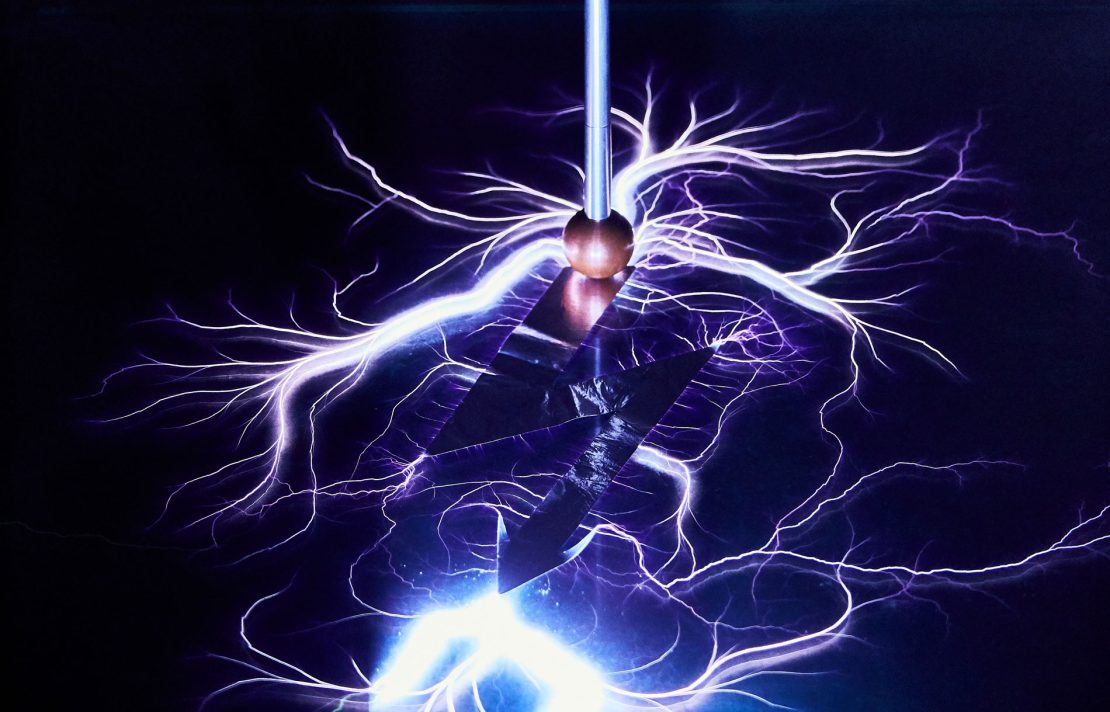
But why direct current? The decision in favour of alternating current and against direct current for power supply dates back to the pioneering period of electricity in the late 19th century, when inventors Thomas Edison and George Westinghouse competed for dominance in the electricity market. Edison, known as the inventor of the light bulb, relied on direct current as the standard for power supply. His arguments were that DC is safe and more reliable than AC. He also said that the technology for its generation and distribution already existed.
Westinghouse, on the other hand, was passionate about alternating current. He realised that, due to its ability to transmit over long distances, it was better suited to transporting electricity from far-away power stations. In order to reduce the electric voltage to the level required in households and industry, what were known as transformer stations were used. Westinghouse won this competition. To this day, almost all of our current worldwide is transmitted as alternating current. For many years, direct current technology played only a minor role, apart from in the teaching of physics.
Sustainability brings direct current back to the table
LAPP has already built up an extensive portfolio for DC, including the ÖLFLEX® DC 100 ffor direct current cables with new core colour coding according to the DIN EN 60445 (VDE 0197) standard, which was updated in 2018. In addition, LAPP produces the DC hybrid line ÖLFLEX® DC SERVO 700 for stationary applications, the TPE-made ÖLFLEX® DC CHAIN 800 for mobile applications, and the first DC robotic line ÖLFLEX DC ROBOT 900 with the TPE core insulation and a PUR sheath. The ÖLFLEX® DC ESS SC single core cable is used for direct current applications up to 1.5 kV for use in energy storage systems (ESS).
As awareness of sustainability, climate change and the energy revolution grew more and more, research institutions and companies increasingly began to think about innovative technologies in order to meet international climate targets. This also included energy research programmes, such as the DC INDUSTRIE project, which has been involved in the seamless and efficient integration of renewable energies and storage systems to balance supply and demand for electricity since 2019 and is supported by the German Federal Ministry for Economic Affairs and Climate Protection. This focuses on direct current supply to a production cell, and later, in its successor project DC-INDUSTRIE2, on an entire production hall. In cooperation with other network partners, LAPP researched the industrial direct current grid of the future here. The Open Direct Current Alliance (ODCA) was ultimately formed from the project. As a founding member of this working group, LAPP is committed to the global construction of a direct-current ecosystem and the establishment of direct-current technology across applications for a rapid energy revolution.

With direct current against peak current loads
But how can direct current make a concrete contribution to the energy revolution? One prominent example can be found with regard to what are known as peak current loads, i.e. high power demands that occur briefly in the power grid. For companies in industry in particular, these can lead to higher energy costs, as peak loads overload power cables, which can lead to short-term network instability and, in the worst-case scenario, power cuts. At the same time, they can lead to considerably higher electricity costs for consumers. This is why energy storage systems can help to avoid peak current loads and reduce electricity costs. As these storage systems in DC networks do not need to be connected up using converters or switches, it is possible to react more quickly and precisely to load changes in DC networks. In particular, the faster response also reduces the risk of grids failing, which is particularly important in production or in data centres.
This becomes important, for example, when we consider electric mobility, which is becoming increasingly important, an important market for e-mobility and LAPP as a pioneer for direct current.
To charge the batteries of electric vehicles, direct current is always required. For this reason, a rectifier is also required when charging from AC networks. In future, shorter charging times will be attained from AC and DC networks due to higher power classes. Greater efficiency can be achieved by charging from DC networks. Another – no less important – example is the use of direct current in data centres, as most computers and servers operate internally using direct current. Correspondingly, energy consumption can be reduced and energy efficiency increased here too. The result is that no more costs or losses are caused by converting alternating current into direct current.
LAPP is a founding member of the Open Direct Current Alliance, or ODCA for short, which was set up by the ZVEI together with companies from industry, science and research. The aim of the working group is to use direct current technology to support and implement the goal of a resource-saving and CO2-neutral world. To achieve this, the ODCA systematically promotes the activities of the direct-current grids.
